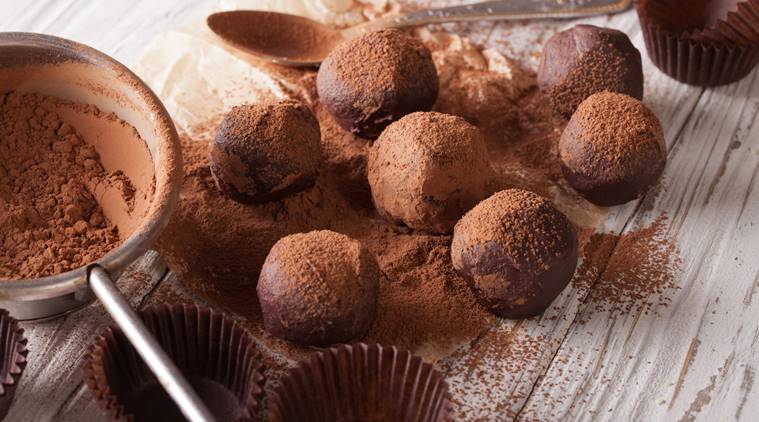 Chocolatiers open up about how they make their chocolates, their favourite flavours and more. (Source: Getty Images/ Thinkstock)
Chocolatiers open up about how they make their chocolates, their favourite flavours and more. (Source: Getty Images/ Thinkstock)
Is making chocolate as delightful a process as eating it is? These chocolatiers tell us about their love for this decadent delight and the challenges of making it, and what would they be doing if they weren’t chocolatiers.
EARTH LOAF – MYSORE
DAVID BELO
After honing his baking skills in London for 11 years, David Belo was on the lookout for “sunshine, a better pace of life and a low-cost environment to incubate ideas”. He hit upon Mysore when he discovered cacao growing there in 2011 and the idea of a bean-to-bar chocolate came to him. Here’s what he has to say.
What do chocolates mean to you?
Chocolate for me is a great metaphor for food in general. Once the champion of industrialisation in the 19th century, it’s been oversimplified, and much of its nuance destroyed through over-processing and standardisation. Yet, with time and care, chocolate can be a highly sophisticated and nuanced experience.
Can you take us through the process of making chocolates?
First, we have to start with the selection. Selecting the right genetics, terroir (area), and in many practical cases, selecting the right farmers to work with. This is because the second stage, fermentation, is a painstaking and involved process and is usually done by the farmer. Next, there’s drying which can be done by sun, wood-fired ovens, gas or electric dryers (all yielding different flavours and results). Followed by sorting of the dried beans, we have cracking, winnowing, grinding, conching, tempering, seasoning and packaging. Of all those processes, the three that have the most significant effect on flavour are selection, fermentation and conching.
If you weren’t a chocolatier, what would you be doing?
I’d probably be an interior designer, architect or return to my very brief stint as a musician. I absolutely adore design, spaces and sounds that have the power to uplift (much like chocolate).
What are your best-selling chocolate flavours?
Our single origins surprisingly outsell our inclusions. Of the inclusions, though, our Caramelised Gondhoraj Lime is very popular, our American Barrel Aged sells out at every pop-up and our Tokai Coffee and Pineapple is a firm favourite.
 (Source: Earth Loaf)
(Source: Earth Loaf)
What is the hardest part about making chocolates?
The balance between working with machines, being at the mercy of the weather and finding people that have the sensibility to work with their hands with a balance of art and science, whilst paying absolute attention to detail.
Any personal favourites?
Of course, my recipes are all my babies, so I have different moments of being really into each of them at different times. Last month, we did a champagne caramel dust with candied popcorn for a custom event. That was pretty tasty!
What is the part you love the most when it comes to making chocolates?
Just observing the seasons and the weather through how the cacao and subsequently, the chocolate changes from month to month. I also like the fact that chocolate is full of variables, which means there’s always something new to explore in order to make it better.
Where do you import your ingredients from?
Nowhere. We have a very strict Indian-only sourcing policy. We want to make sure that as much of our activities benefit the local economy as possible. It’s not always easy, but it’s made us look for interesting ingredients rather than revert to predictable ones.
HARSH CHOCOLATES, MUMBAI
ANUJA AND ANKITA JAIN
“About 17 years ago, our mother made a batch of chocolates and we polished it off in minutes”, says Anuja. “This was when doing this for a living struck us.” Inspired by their mom, who was not only an outstanding cook but was also entrepreneurial by nature, Harsh Chocolates was born.
What do chocolates mean to you?
A two-minute journey of indulgence and pleasure.
Can you take us through the process of making chocolates?
From the cacao beans, the nibs are extracted, roasted and then combined with cocoa butter. They are then turned into slabs or buttons. The next step is to temper the chocolate and mould it. Some of our chocolates are not moulded. Our Almond Rocks and White Pot are handcrafted.
If you weren’t a chocolatier, what would you be doing?
Oh! I cannot think of anything other than this but we would have been a part of the food industry for sure.
What are your best-selling chocolate flavours?
Almond Rocks, Biscuit Chocolate (are our classic favourites), Brownie Chocolate, White Pot, and recently launched Hot Chocolate Stir ins.
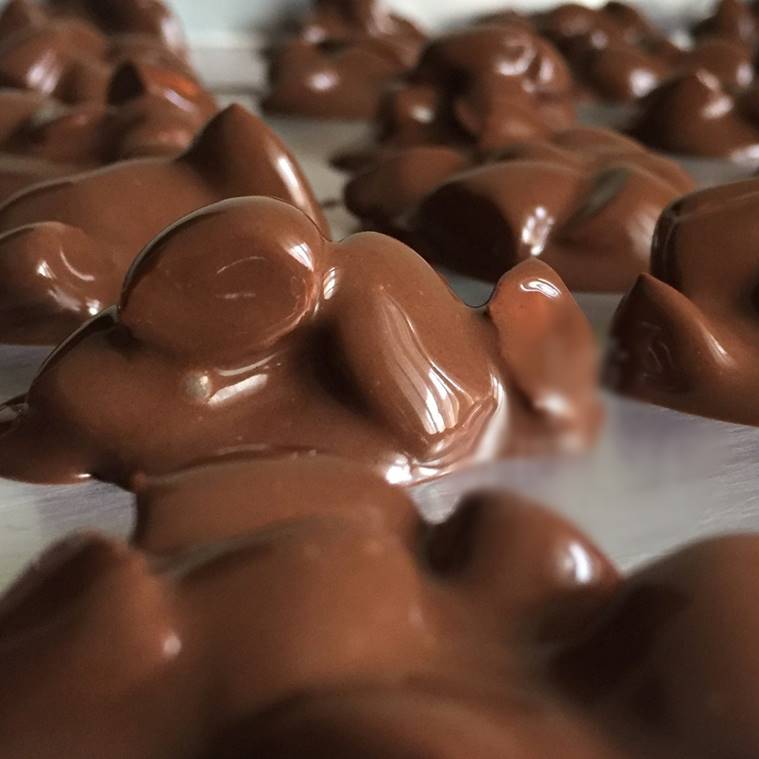 Almond rocks. (Source: Harsh Chocolates)
Almond rocks. (Source: Harsh Chocolates)
What is the hardest part about making chocolates?
Combining two flavours. The balance should be well struck.
Any personal favourites?
Biscuit chocolates and The White Pot.
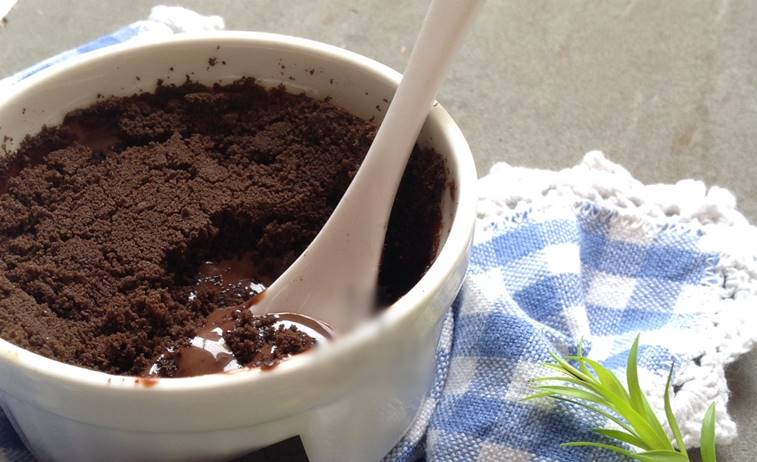 White Pot. (Source: Harsh Chocolates)
White Pot. (Source: Harsh Chocolates)
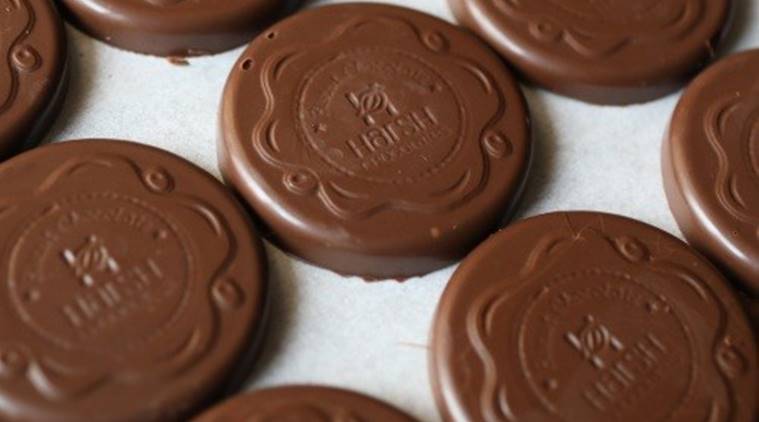 Biscuit Chocolates. (Source: Harsh Chocolates)
Biscuit Chocolates. (Source: Harsh Chocolates)
What is the part you love the most when it comes to making chocolates?
When the chocolate is just about ready to be poured in. It has the perfect temperature, texture and gloss. That melted form of chocolate has endless possibilities. The chef using it turns it into his/her best version!
Where do you import your ingredients from?
We are currently importing with the help of local vendors. Some raw materials are from Malaysia, Singapore, Belgium and Switzerland. The nuts are all locally sourced.
CHOCOLATE PHILOSOPHY, BANGALORE
NIVEDITA PRASAD, UMA RAJU
One of the first companies to sell chocolates from 10 different origins of the world, Chocolate Philosophy was started by two moms who met in their kids’ school. “We coined the name Chocolate Philosophy as each of our boxes has a little bit of chocolate and a little bit of philosophy.”
What do chocolates mean to you?
N: Chocolate means happiness, the minute one says chocolate…it always brings smiles.
U: For me chocolate is comfort. It’s like meditation for my senses.
Can you take us through the process of making chocolates?
We are artisanal chocolate makers, we make everything by hand. We use pure couverture chocolates, which is chocolate made with 100% cocoa butter.
We melt and temper our chocolate on stone and then work with the tempered chocolate and mould it into various shapes or freehand pralines cut with a guitar cutter. We also infuse our chocolates with various flavours to create decadent ganaches.
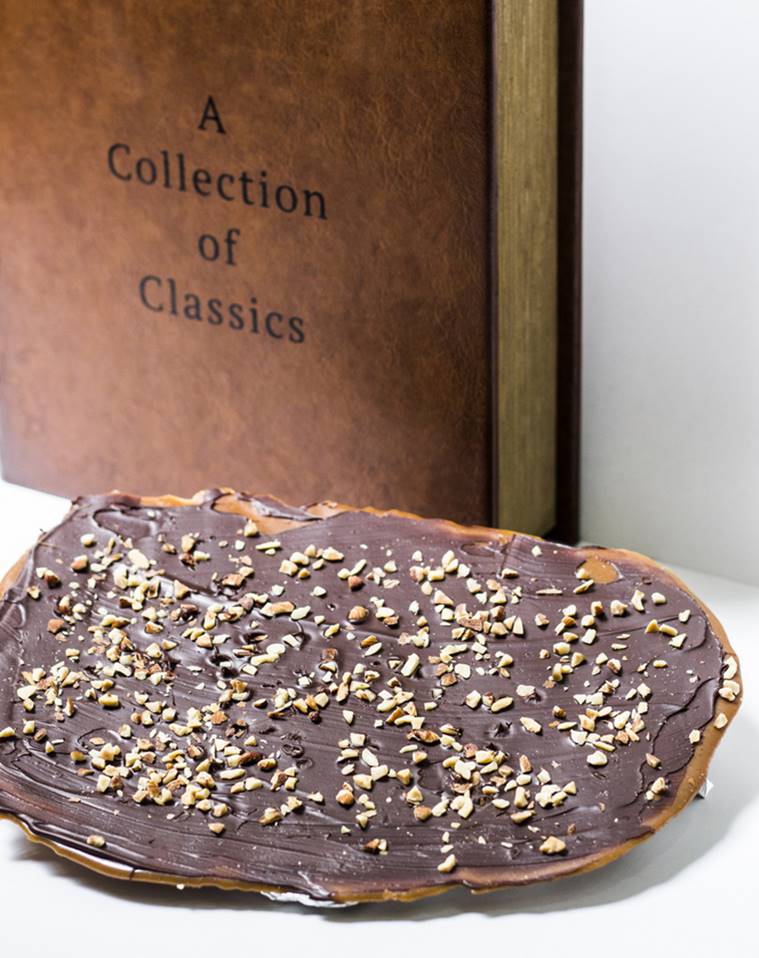 Chocolate disc.
Chocolate disc.
If you weren’t a chocolatier, what would you be doing?
N: I would be in the field of designing clothes or saris.
U: I would be teaching yoga to kids, for free.
What are your best-selling chocolate flavours?
Chilled Dark Fudge, Sea Salt Caramel, Roasted Almond Slates, Salted Almond Chilli Slates.
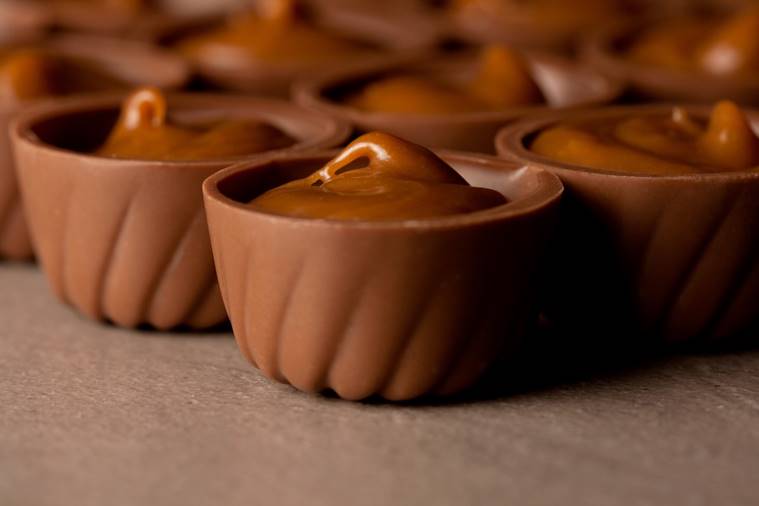 Sea Salt Caramel.
Sea Salt Caramel.
What is the hardest part about making chocolates?
To be consistent in getting the perfect finish and taste every single time.
Any personal favourites?
N: Espresso Bar
U: Sea Salt Caramel in dark
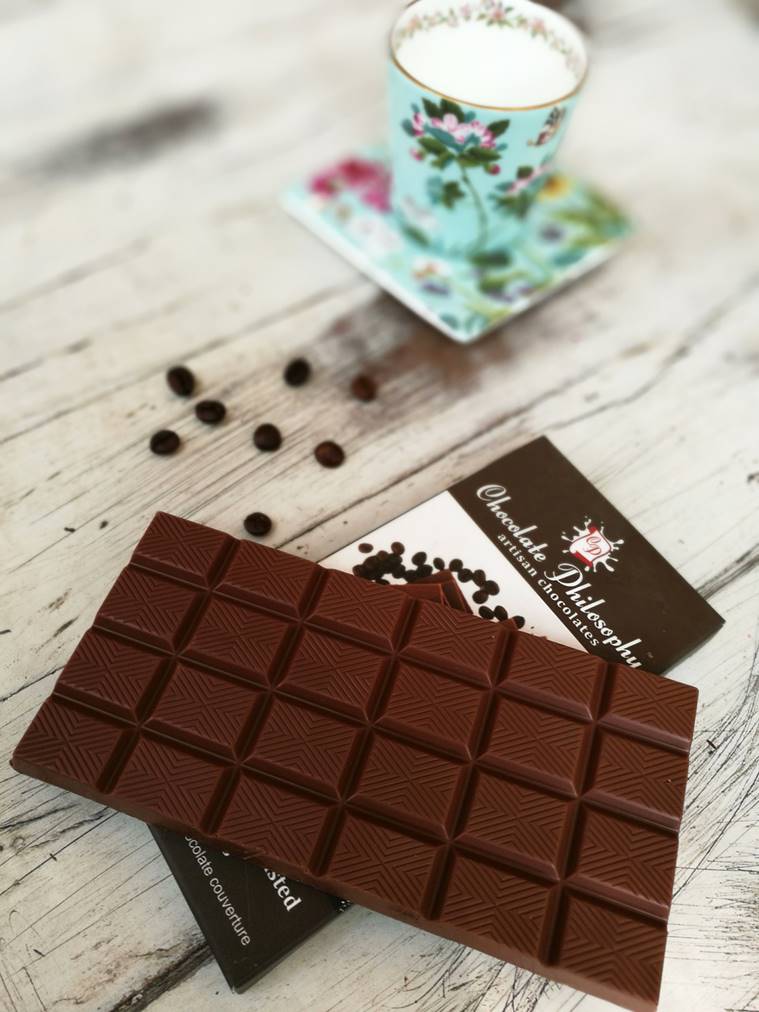 Espresso bar.
Espresso bar.
What is the part you love the most when it comes to making chocolates?
N: The melting of the chocolate.
U: Cutting beautifully set chocolate into perfect squares of pralines.
Where do you import your ingredients from?
Belgium, Switzerland and France.